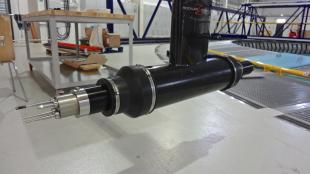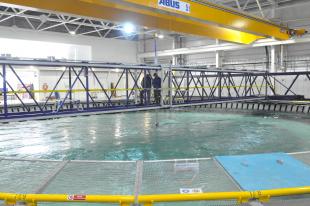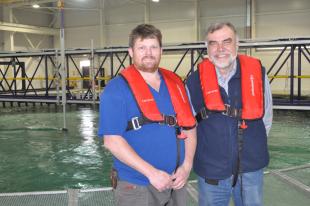Trans-Atlantic research funding package to focus on measuring & understanding tidal turbulence
(Expansion on InnovateUK Official News Release – 21 July 2015)
Six of the leading organisations in ocean energy research have secured funding to work together to measure and better understand the behaviour and impact of tidal turbulence at tidal energy sites and on tidal energy devices.
The InSTREAM project, involving both academia and industry on both sides of the Atlantic, will seek to improve the understanding of turbulence in energetic tidal flows and will greatly aid the development of marine energy conversion devices to consistently and reliably generate clean low carbon energy from strong tides and currents.
The initiative is one of two projects that are announced under a memorandum of understanding between Nova Scotia and the UK and the two studies, worth a combined £710,000, will be funded by Innovate UK, Canadian federal government agencies, and private industry.
On the UK side FloWave, the European Marine Energy Centre (EMEC), and Cambridge-based Ocean Array Systems (OAS) will work alongside Nova Scotia’s Dalhousie University (‘Dal’) and Black Rock Tidal Power (BRTP), all under the leadership of British Columbia-based Rockland Scientific.
As part of the project, Rockland Scientific and its partners will develop a new sensor system to measure tidal turbulence and the impact of turbulence on tidal devices. A large part of the early work of this research project will be conducted at the FloWave Ocean Energy Research Facility, which is based at the University of Edinburgh’s 43 acre Science and Engineering campus.
A concept of the University’s School of Engineering, FloWave’s 25m diameter circular test tank can simulate the ocean in all its complexity for waves and current, and in particular can replicate at scale the fast tidal current conditions found in the Bay of Fundy, at EMEC, and at tidal sites all around the world.
Open water testing for the project will be carried out by EMEC at their project sites in Orkney, and by BRTP/Dal in the Bay of Fundy. Analysis of the data gathered both in the test tank and in the real sea will be performed by OAS using their proprietary software, and will ensure that the outputs align with their other tidal turbulence project work such as for the MRCF-funded TiME project.
Most importantly the InSTREAM project will allow development not only of better instruments for measuring turbulence – both at test tank scale and in the real sea – but also more sophisticated techniques for characterising and describing that turbulence and for ‘translating’ the results from one environment to the other and back again. For device developers this crucial ‘translation’ should allow better simulation of devices at tank scale, and a greater likelihood of ‘right first time’ designs being deployed in the energetic but unforgiving ocean environment.
Stuart Brown, Chief Executive Officer at FloWave TT Ltd, said: “FloWave is really pleased to be able to partner in this project. Our test tank is uniquely capable of replicating both EMEC and the Bay of Fundy at scale. The prospect of new instrumentation, data and analysis techniques that will help the industry better understand and address the challenge of turbulence in the tidal flow, particularly around structures and within projects, is to be welcomed. We very much look forward to working with our Canadian and UK partners over the next three years to help drive this industry forward on both sides of the Atlantic, and globally too.”
Oliver Wragg, Commercial Director at EMEC said: “We’re delighted to be collaborating with FloWave, Rockland, Black Rock Tidal Power and Ocean Array Systems on this project, which will address some of the shortcomings of existing measurement technologies, enabling developers to better evaluate the dynamic behaviours of the sites in which they plan to deploy tidal energy turbines. If this can be designed into the technologies earlier on, it should reduce risk in the latter stages of development and testing at EMEC.”
Nicola Pearson, Commercial Director at Ocean Array Systems said: “Ocean Array Systems is excited to provide the link between the MRCF TiME project and the OERA/ Innovate UK InStream project. Ocean Array Systems will use its EnvironmentStudio and TurbineGrid software to model device-turbulence interaction using test tank and ocean data. This work will provide turbine developers with a direct translation of unsteady loads between conditions at FloWave and those experienced at full scale under turbulent marine conditions.”
The second project funded under the MoU involves UK-based Tritech International, Ocean Sonics, and SMRU’s UK and Canada divisions in partnership with Nova Scotia-based OpenHydro Canada, Acadia University and project leaders Emera. Their project will develop an acoustic sensing system to improve the detection and tracking of fish and marine mammals at tidal sites in the Bay of Fundy.
Web link: More information on projects and partners is available at www.oera.ca.
You can watch this video on FloWave's YouTube channel.





